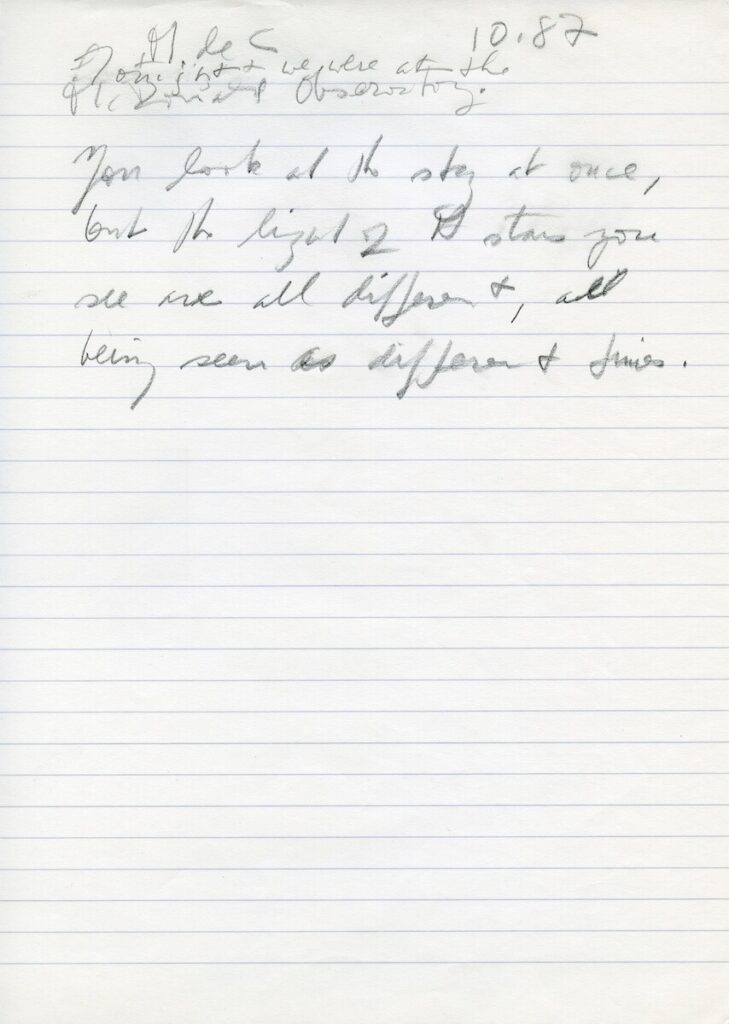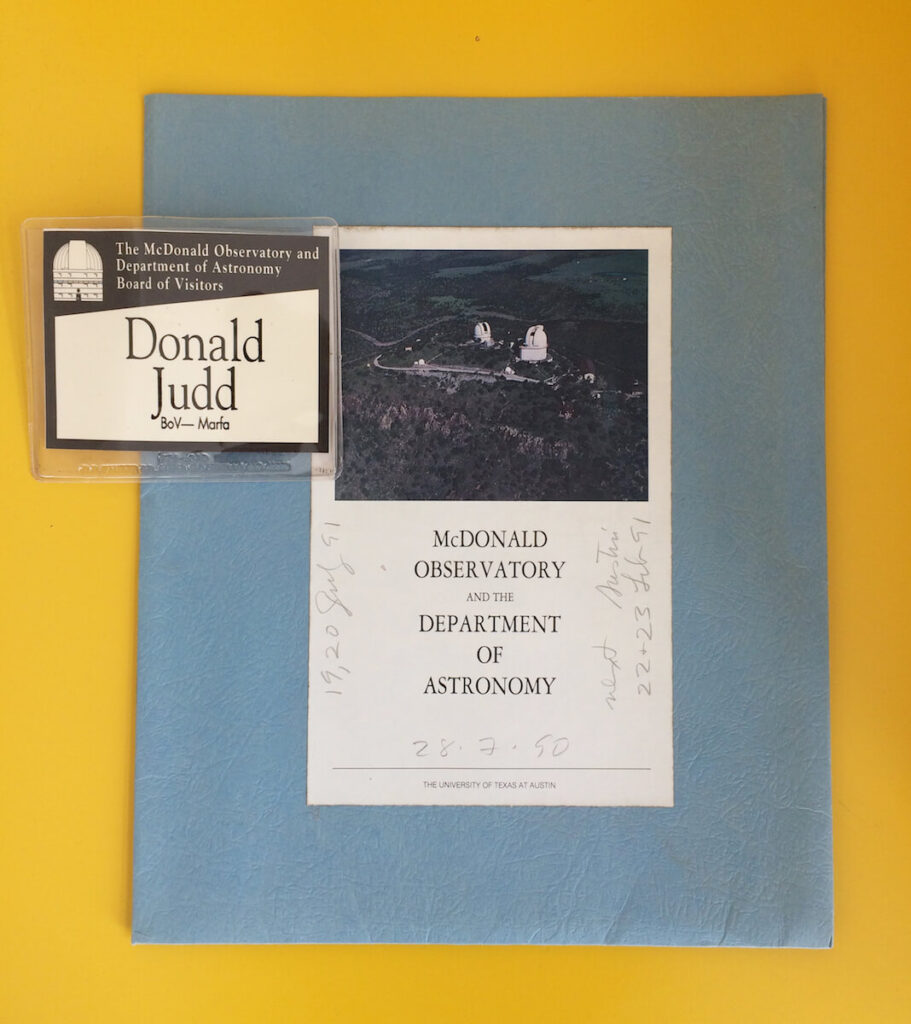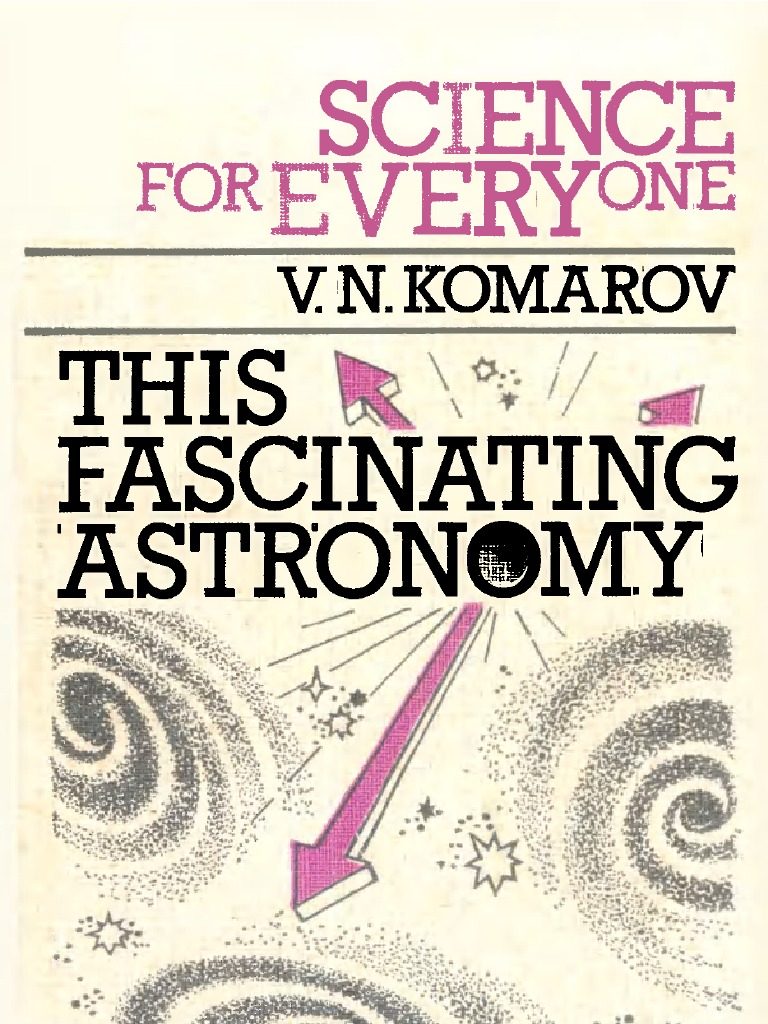

“Tonight we were at the McDonald Observatory,” Donald Judd wrote in a note from October 12, 1987, “You look at the sky at once, but the light of the stars you see are all different, all being seen as different times.”
Judd engaged in observation using his own Questar telescope. Purchasing the telescope in the late 1960s, before Marfa, Texas became his primary residence, Judd used it to observe the night sky at his various ranch houses, including Casa Morales and Las Casas. In addition, Judd had numerous star maps, including one that he installed in a study at Las Casas.
In Judd’s library at La Mansana de Chinati/The Block in Marfa are 44 books and dozens of magazines related to astronomy, including many editions of the bi-monthly magazine Star Date, published by the McDonald Observatory located in the Davis Mountains of Fort Davis, 30 miles north of Marfa. While many of the volumes are practical in nature, such as field guides to planets and stars, Judd also collected books on more diverse astronomical topics, including Native American Astronomy (Austin: University of Texas, 1977), Discoveries and Opinions of Galileo (New York: Anchor, 1990), Prehistoric Astronomy in the Southwest (Boulder: Johnson, 1989), and Black Holes: The Edge of Space, The End of Time (New York: Warner, 1980).


In a note from October 14, 1987, Judd wrote, “The ‘first-generation’ stars, as in the globular cluster: ‘Hercules can’t have planets, I guess, because there is nothing more than hydrogen and helium. The massive stars presumably can’t have live planets because they don’t exist long enough for life to develop. Einstein said ‘the contemplation of this world beckoned like a liberation…’ But for almost everyone it’s the opposite. Last night we were shown Jupiter with two moons off to the lower left, the globular cluster in Hercules, the Ring Nebula in Lyra, and the Andromeda Galaxy. Maybe because it was new to me and in this galaxy, fifteen billion years old, strange and dense, the cluster made me think most. Andromeda, 2.2 million light years away.”
Judd believed in the importance of the distinction between art and science, writing in 1969, “I dislike very much this sort of sloppy correlation of such highly different activities as science and art.” He argued that art that directly incorporated science often romanticized and debased real scientific accomplishments. “The only attitude in regard to science to be taken by contemporary art,” Judd wrote in 1983, “is that the art should have appearances and implications which correspond to what is now known.” He continues:
“No artist through their work will ever tell you how far away Vega is. The distance of Vega affects art but art says nothing about Vega. But no scientist will ever tell you about Piero della Francesca, or that much about anyone.The distinction between scientific knowledge and artistic knowledge is very important. For two hundred years or so art has been freeing itself from being obliged to say things about the world which are properly in the area of science.”


In February 1989, Judd joined the Board of Visitors of the McDonald Observatory. Established in 1933, it is one of the world’s leading centers for astronomical research situated in some of the darkest night skies in the continental United States. As a member of its Board of Visitors, Judd helped the McDonald Observatory raise funds for the Hobby-Eberly Telescope, a Spectroscopic Survey Telescope (SST) which has vastly added to the knowledge and understanding of the universe. Completed in 1997, the Hobby-Eberly Telescope is one of the world’s largest optical telescopes with its 11-meter (433-inch mirror) designed specifically for spectroscopy and the decoding of light from stars and galaxies to study their properties. Concurrent to the time that he joined the Board of Visitors, Judd made the following notes: “One great thing in science is the interrelation of theory and instrument,” and “They said that a hundred people in the world were working on the origin of the universe.”
In October 1993, Judd shared one of the books on astronomy from his library, V.N. Komarov’s This Fascinating Astronomy (MIR: Moscow, 1985), with Frank N. Bash, friend and Director of the Observatory at the time. Not a standard popular science text, This Fascinating Astronomy instead explores the problems of modern astronomy through the lens of science fiction. In a note from 1987, Judd wrote, “Science fiction is acquiring a reputation for accurate predictions.” Judd’s engagement with and respect for scientific inquiry across many fields, both practical and theoretical, demonstrate his deep commitment to knowledge, which is reflected in his artistic pursuits. As he wrote in his last published essay in 1993, “All experience is knowledge: subjective experience is knowledge; objective experience, which is science, is obviously knowledge. Color is knowledge.”

In May 2017, as part of its ongoing commitment to exploring the many facets of Judd’s artistic and intellectual pursuits, Judd Foundation hosted its second annual Star Party at La Mansana de Chinati/The Block. For more information on the Star Party, please visit the Programs page.